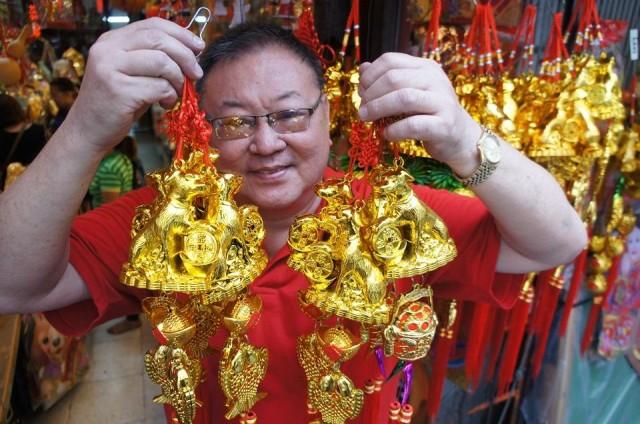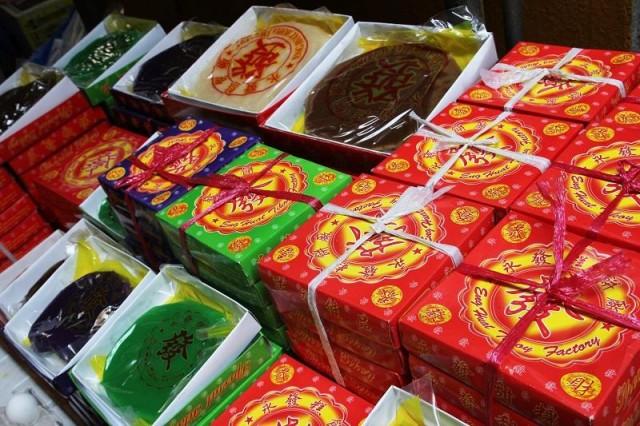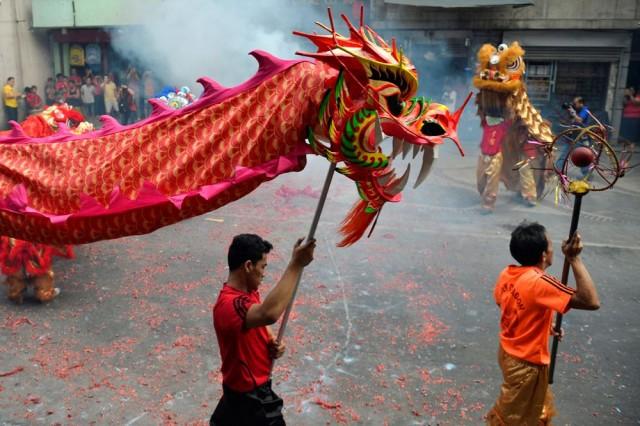A primer to welcoming the Year of the Earth Dog
Aside from being a special, non-working holiday, the knowledge of a lot of Filipinos about the Spring Festival — aka Chinese New Year — only skims the surface.
So before the Fire Rooster gives way to the Earth Dog, allow us to offer you some when’s, what’s, and how’s to celebrate the most important date for the Chinese all over the world.
Gong Xi Fa Cai or Kung Hei Fat Choi?
Short of the long: Gong Xi Fa Cai is Mandarin while Kung Hei Fat Choi is Cantonese.
The syllables Gong Xi/Kung Hei mean congratulations, while Fa Cai/Fat Choi translate to become prosperous or have lots of money. So they mean the same thing: “Congratulations and may you be prosperous.”
Mandarin is the official Chinese language (both written and spoken), hence most people of Chinese descent know it. Cantonese is also a widely spoken but it is considered a dialect (think Ilocano or Ilonggo), much like Hokkien/Fookien.
In fact, there’s a Hokkien version of the greeting which is "Kiong Hee Huat Tsai". Most Filipino-Chinese actually trace their roots to Fujian, in Southern China and are more adept at speaking Hokkien than Cantonese.
The proper way to respond when someone greets you this is to say “Gong Xi” back while motioning a closed right hand over a clenched left fist. Responding “Xin Nian Kuai Lè” or Happy New Year is also an acceptable practice.

Spring Festival what?
The Chinese don't ask why it's called Spring Festival anymore; it's just an accepted fact. But according to China Daily, it's called thus because it happens at the start of — surprise, surprise — the Spring season. It's celebrated for 15 days, with the first day during the new moon and the last day of the festivities when La Luna is full.
This is how the Chinese feast (and the many why's)
Much like January 1/New Year, Chinese New Year celebrations start a day before, usually at night.
During the eve of Chinese New Year, family members gather around a round table to feast. It has to be a round table, not a square or rectangle table that has four sides because in the very tonal Chinese language, the word "four" translates to "si" which sounds like "death".
A typical meal consists of bowls of white rice, noodles for long life, meats and seafood like whole fish, dumplings or jiaozi, fish yu shang (for prosperity), and fried Nian Gao or tikoy.
RELATED: Where to eat when...celebrating Chinese New Year
Tikoys come in circle blocks and can either be brown or white. Why the different colors, you ask? It depends on the ingredient, whether brown sugar or white sugar is used. The circle shape has something to do with wholeness and completeness.
A simple way to prepare these glutinous rice-based ingredient is to coat them with beaten eggs and then pan fried; wrapping them in lumpia wrappers is another presentation that gives a nice crunch.

Sticky and therefore signifying togetherness of the family, tikoy is the quintessential Chinese New Year treat but not too far behind in popularity is the radish/turnip cake; fried to achieve crisp, golden crusts, these cakes are best eaten with chili oil on the side.
Most Filipino-Chinese families also hang posters or banners with Chinese characters to entice prosperity or fortune for the year ahead. Written in gold with red backdrops, some of these include ? for luck/good fortune, ? for wealth, and ? for health and long life.
Honoring ancestors is part of the tradition
Aside from spending time with the living, Chinese New Year is also a time to honor one’s ancestors through food offerings (usually a meal consisting of rice, meat, fish, and soup), lighting of incense, and burning “gold” paper money. The last practice, burning of ?? or literally “gold paper” or “ghost paper” is a spiritual way of remitting “money” in return for protection or good luck from above.
The goings-on in Binondo

Because of the recent surge in popularity and having the title of being the oldest Chinatown in the world, Binondo, right in the heart of Manila, is where all the action can be seen during the Chinese New Year. Aside from great food, expect lion and dragon dances, cultural presentations, fireworks to drive away the evil spirits, and unfortunately, heavy traffic.
RELATED: Binondo food crawl: An insider's guide
If you can’t stand the huge crowd expected to occupy Binondo’s intersection of Ongpin and Quintin Paredes (formerly Rosario) Streets, participate in the celebrations by wearing red, giving of red envelops with money or ang paos (??) to your nephews and nieces, and spending time with your family.
And the difference between Lion and Dragon dance?
Both move to the tune of banging drums, cymbals, and even the sound of firecrackers, but a lion dance consists of a two-person group that manages the head and tail parts of the lion. The two-member lion dance is the one that goes through houses and establishments and asks for ang pao (red envelop).
A dragon dance meanwhile is composed of several members who perform a certain choreography with using a long dragon body held by sticks or poles. Dragons are more revered in Chinese culture and the dragon dance is most reserved for Chinese New Year celebrations.
Have a great and prosperous Year of the Earth Dog everyone! — LA, GMA News



